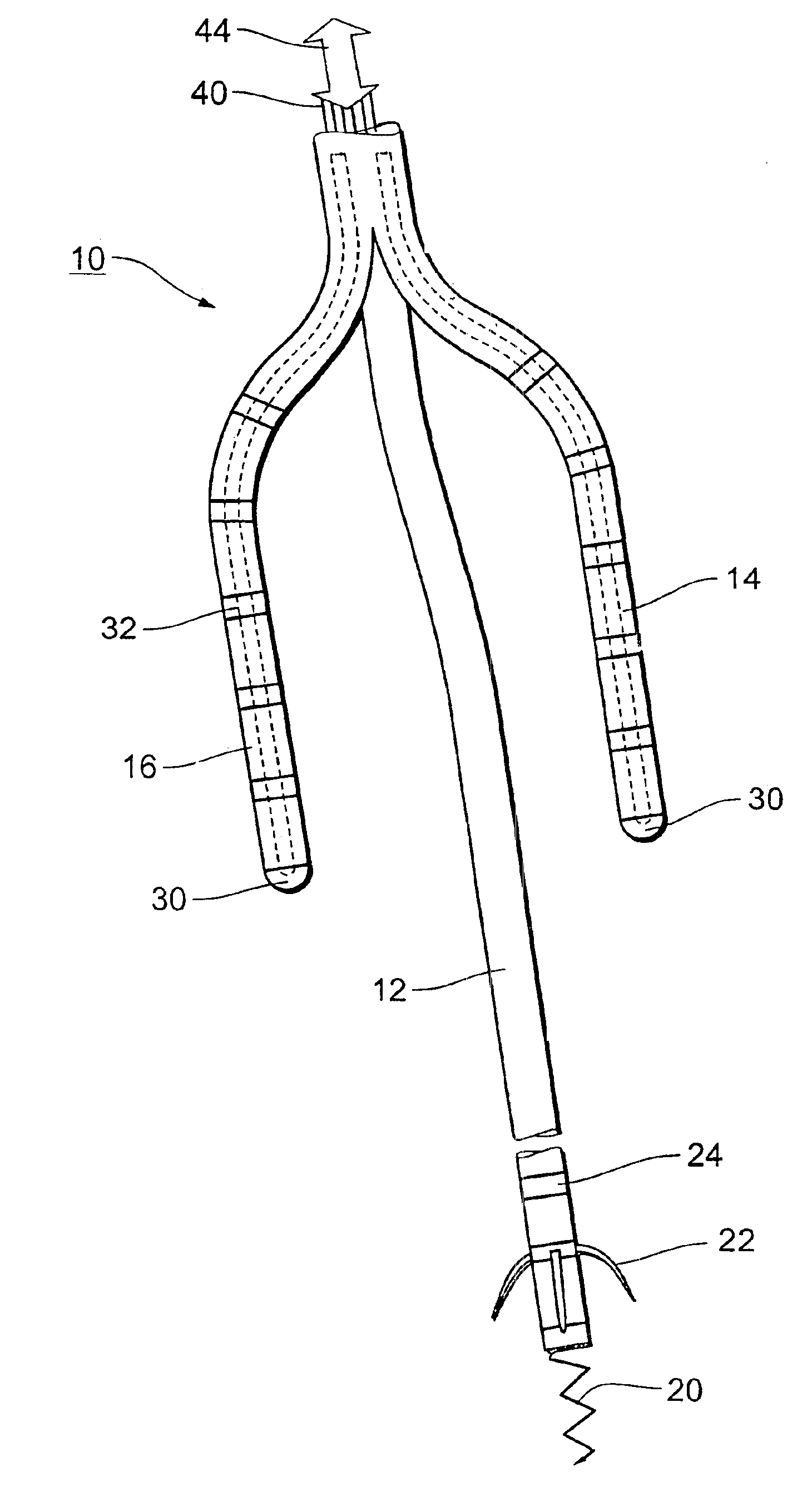Electrode lead with multiple branches
a technology of electrode leads and branches, applied in the field of electrode leads, can solve the problems of tissue damage, patient pain, serious stress, etc., and achieve the effect of increasing the number of diagnostics
- Summary
- Abstract
- Description
- Claims
- Application Information
AI Technical Summary
Benefits of technology
Problems solved by technology
Method used
Image
Examples
Embodiment Construction
[0028]The distal end of an electrode line 10, as shown in FIG. 1, is split up into three branches, more specifically a ventricular branch 12, a septal branch 14 and a lateral branch 16.
[0029]The septal branch 14 and the lateral branch 16 each have six electrodes which are arranged equidistantly relative to each other and which are formed by conductive surface portions of the branches 14 and 16. The electrodes arranged at the free end of the two branches are in the form of tip electrodes 30 while the other electrodes which respectively follow the tip electrodes and in successive relationship with each other at a spacing of about one centimeter are in the form of ring electrodes 32. Each of the electrodes 30 and 32 can be individually connected by way of suitable signal and control lines 40 to a device for receiving electrical signals and for delivering voltage pulses with a defibrillator (not shown). Further-more, at the distal end of both the lateral and the septal branch 14 and 16 ...
PUM
 Login to View More
Login to View More Abstract
Description
Claims
Application Information
 Login to View More
Login to View More - R&D
- Intellectual Property
- Life Sciences
- Materials
- Tech Scout
- Unparalleled Data Quality
- Higher Quality Content
- 60% Fewer Hallucinations
Browse by: Latest US Patents, China's latest patents, Technical Efficacy Thesaurus, Application Domain, Technology Topic, Popular Technical Reports.
© 2025 PatSnap. All rights reserved.Legal|Privacy policy|Modern Slavery Act Transparency Statement|Sitemap|About US| Contact US: help@patsnap.com



